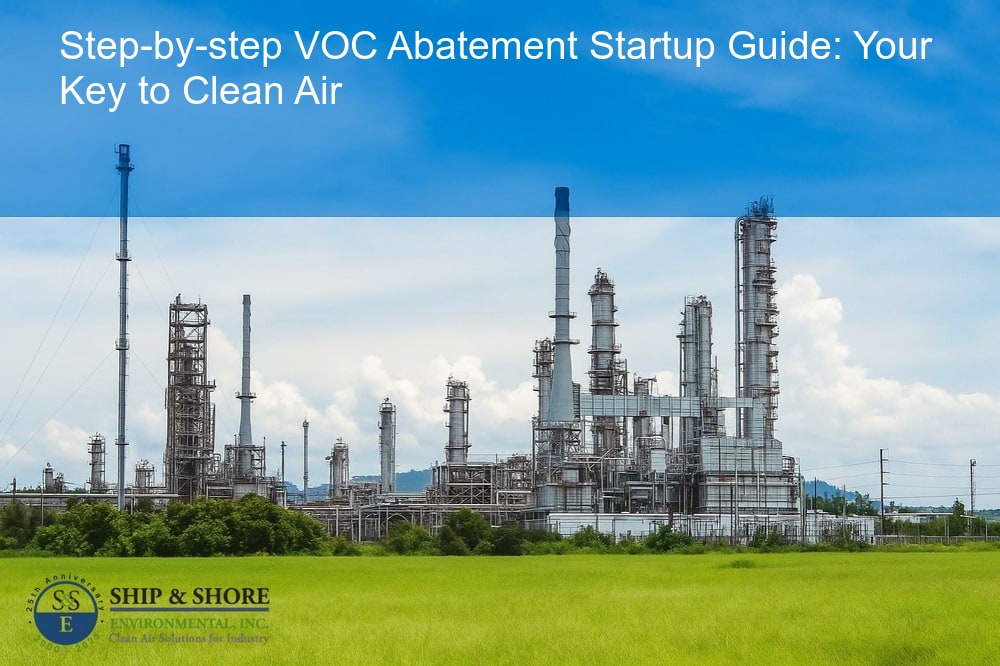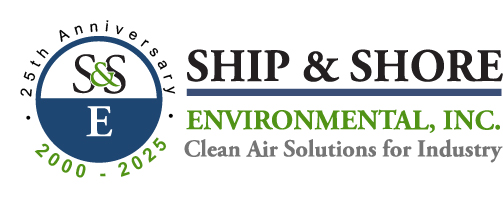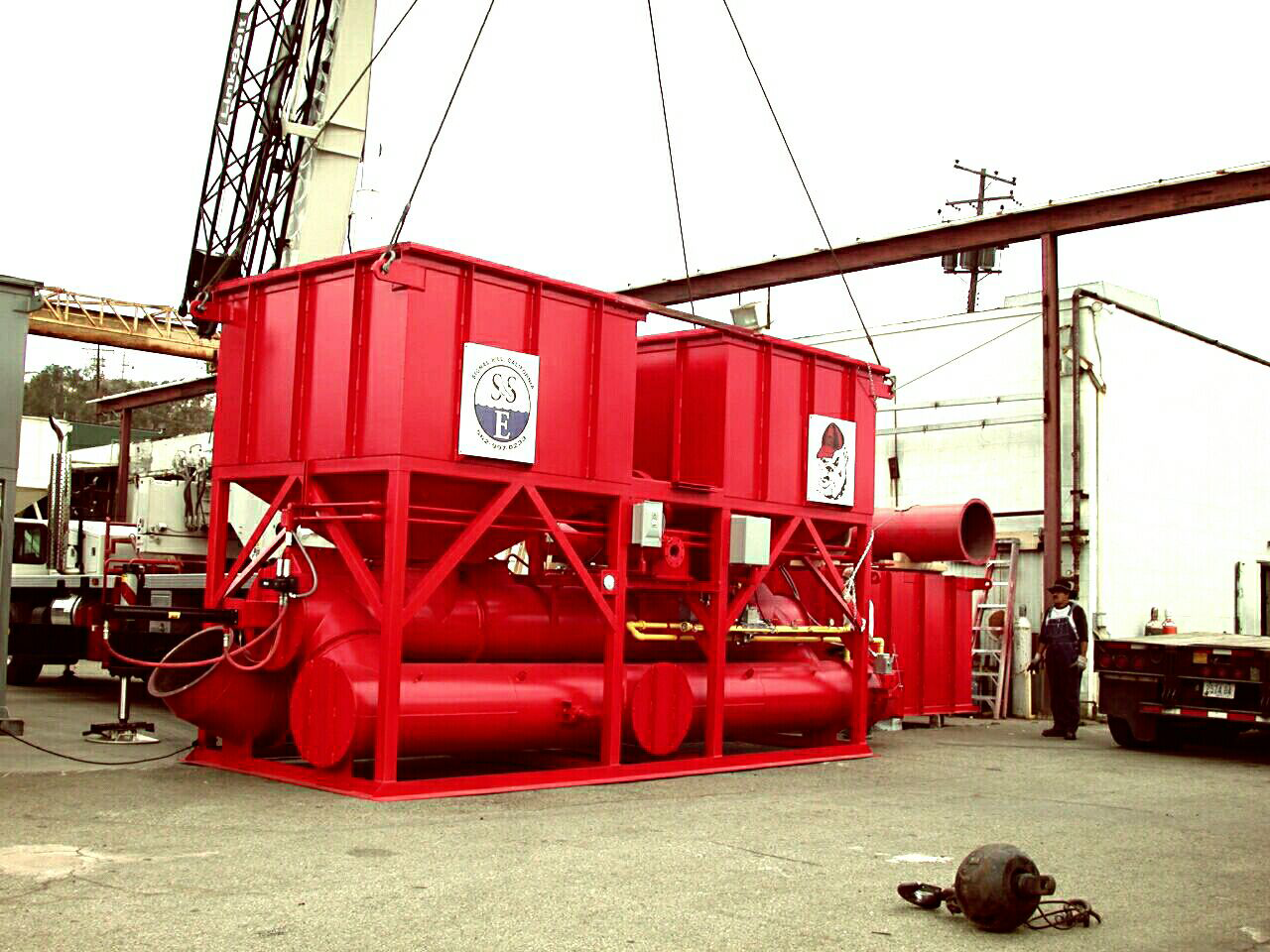
Step-by-Step VOC Abatement Startup Guide for Eco-Friendly Industry
October 29, 2025 7:55 amRecognizing the Need for VOC Abatement
Welcome to our Step-by-step VOC abatement startup guide. As we continue to navigate industrial progress, it’s essential to recognize the significant impact that Volatile Organic Compounds (VOCs) have on both our environment and public health. VOC emissions are a growing concern across multiple industries, making VOC abatement not only a regulatory requirement but a moral obligation. At Ship & Shore Environmental, Inc., we are committed to providing clear and actionable information to help industries effectively manage and reduce their VOC emissions.
Understanding VOCs and Their Impact on the Environment
Volatile Organic Compounds (VOCs) are organic chemicals that easily evaporate at room temperature. These compounds are found in a variety of products, from industrial solvents to cleaning agents and paints. VOCs can be harmful to human health, causing respiratory issues, headaches, and other health problems. More importantly, when VOCs are released into the atmosphere, they contribute to the formation of ground-level ozone and smog, significantly impacting air quality and the environment.
Understanding the makeup of VOCs and how they affect the environment is the foundational step towards effective abatement. For businesses, tackling VOC emissions is not just about adhering to regulatory standards; it’s about implementing sustainable practices that benefit the community and the planet. As such, our guide aims to deepen your understanding of VOCs and reinforce the need for proactive measures to mitigate their impact.
Purpose of a Step-by-step VOC Abatement Startup Guide
Our step-by-step VOC abatement startup guide is designed to be an essential resource for industries looking to start their journey toward effective VOC control. Recognizing that every facility has unique challenges, we have developed this guide to offer a comprehensive and flexible approach to VOC abatement. This guide aims to bridge the knowledge gap and provide clear, concise steps that businesses can follow to improve their environmental footprint.
By outlining the critical stages of VOC abatement, from identifying emission sources to selecting appropriate technologies, this guide equips you with the necessary tools and knowledge to achieve substantial and sustainable reductions in VOC emissions. It is our hope that through this structured and informative resource, your facility can not only meet compliance standards but also contribute positively to environmental conservation and public health.
Identifying Your VOC Emission Sources
Understanding where VOCs (Volatile Organic Compounds) originate within our operations is the first pivotal step toward implementing effective abatement strategies. Typically, VOCs are found in emissions from industrial processes such as chemical manufacturing, painting, coating, and printing. By conducting a comprehensive audit, we pinpoint all sources of VOC emissions and assess their contribution to the overall environmental impact.
In addition to direct sources, we must also consider secondary sources. These can include storage tanks, piping systems, and venting operations. Once we have identified and quantified emissions from each source, we can develop a tailored abatement strategy. It’s essential to continually monitor these sources to ensure compliance and to adjust abatement methods as processes evolve.
Selecting the Right VOC Abatement Technology
Choosing the appropriate abatement technology is crucial for effectively reducing VOC emissions. We have several options to consider, each with its unique advantages and applications:
- Thermal Oxidizers: These are highly effective at converting VOCs into CO2 and H2O through high-temperature combustion. They are suitable for high-concentration VOC streams and are known for their efficiency.
- Catalytic Oxidizers: Operating at lower temperatures than thermal oxidizers, catalytic oxidizers use a catalyst to facilitate the oxidation process. This technology is ideal for streams with lower VOC concentrations where energy efficiency is a priority.
- Adsorption Systems: Utilizing activated carbon or other adsorbent materials, these systems trap VOCs and are particularly useful for intermittent or variable concentration emissions.
- Biofilters: These systems employ microorganisms to biologically degrade VOCs. Biofilters are environmentally friendly and effective for low-concentration VOC streams.
When selecting the right technology, we must consider several factors including VOC concentration, flow rate, operational costs, and regulatory requirements. Additionally, we must evaluate the long-term sustainability and maintenance needs of the chosen technology to ensure reliable and continuous abatement performance.
Implementing VOC Abatement: A Start-up Guide
Once we have identified our VOC emission sources and selected the appropriate abatement technology, the next step is implementation. The following step-by-step VOC abatement startup guide will help us navigate this process efficiently:
- Site Assessment and Preparation: Conduct a thorough site assessment to determine the optimal location for the abatement equipment. Ensure there is adequate space and infrastructure to support the installation.
- System Design: Work with engineers to design a system that integrates seamlessly with our existing processes. This includes specifying the equipment layout, control systems, and safety features.
- Installation: Engage professional installers to set up the abatement equipment. Adherence to the manufacturer’s guidelines and industry standards ensures a successful installation.
- Commissioning and Testing: Conduct commissioning trials to verify that the system operates as expected. Testing should include performance metrics such as VOC removal efficiency and compliance with regulatory standards.
- Training and Handover: Provide comprehensive training for our staff on operating and maintaining the new system. A smooth handover process ensures our team can manage the equipment effectively.
- Ongoing Monitoring and Maintenance: Implement a routine maintenance schedule to preserve system integrity. Regular monitoring allows us to detect and address issues before they escalate, ensuring continuous compliance with VOC emission limits.
Following this step-by-step VOC abatement startup guide helps streamline the implementation process, making it more manageable and efficient. Taking each step carefully ensures a robust abatement system that achieves our environmental goals effectively. We also reinforce our commitment to sustainability by staying current with best practices in VOC abatement technologies and regulatory changes, adapting our strategies as needed.
Did you know that many common products like paints, cleaners, and adhesives emit volatile organic compounds (VOCs) that can harm the environment and our health? Proper management and abatement steps can significantly reduce their impact.
Key Takeaways from the Step-by-step VOC Abatement Startup Guide
Developing a comprehensive understanding of volatile organic compounds (VOCs) and their environmental impact is crucial for any industrial operation. Our step-by-step VOC abatement startup guide offers a meticulous roadmap designed to identify emission sources and select the right abatement systems. It provides a coherent plan for implementation, ensuring we meet regulatory standards and contribute positively to environmental sustainability.
The Role of Compliance and Regular Maintenance in VOC Abatement
Compliance with environmental regulations isn’t just about avoiding penalties; it’s about committing to a sustainable future. Regular maintenance of abatement systems is essential to keep them functioning at peak efficiency. Routine checks and timely upgrades can prevent unexpected breakdowns, ensuring continuous compliance with regulatory norms. Our commitment to regularly maintaining our systems helps sustain our operational efficiency and environmental responsibilities.
Beyond the Guide: Embracing a Sustainable Industrial Future
While our step-by-step VOC abatement startup guide provides a solid foundation, embracing a sustainable future requires continuous effort and dedication. We must look beyond compliance and maintenance, integrating new technologies and practices to further reduce our VOC footprint. This includes investing in research and development to innovate more efficient abatement solutions and fostering a culture of environmental awareness within our teams.
By diligently following the guide, maintaining our abatement systems, and pushing the envelope toward sustainability, we can play a pivotal role in creating a cleaner, healthier environment for future generations. Let’s commit to this journey together, one step at a time.
FAQ
Why is understanding and managing VOC emissions important for industries?
As a responsible entity, recognizing the significance of managing VOC emissions is vital because VOCs have a considerable environmental impact. By effectively controlling these emissions, we can help reduce air pollution, mitigate health risks, and comply with stringent environmental regulations. Therefore, our commitment to understanding and addressing VOC emissions underscores our dedication to both legal compliance and environmental stewardship.
How do we identify the sources of VOC emissions in our industry?
Identifying VOC emission sources within our operations begins with a thorough assessment of all processes and materials that may emit volatile organic compounds. By conducting this comprehensive evaluation, we can pinpoint specific sources and subsequently tailor our abatement efforts to those areas, thereby enhancing the effectiveness of our environmental initiatives.
What technologies are available for VOC abatement, and how do we choose the right one?
Various technologies exist for VOC abatement, including thermal oxidation, catalytic oxidation, adsorption, and biofiltration. Selecting the right technology depends on several factors, such as the types of VOCs emitted, the volume of emissions, and specific industry requirements. It is essential that we align our selection with these variables to ensure optimal efficiency and compliance with environmental standards.
Why is regular maintenance of VOC abatement systems so important?
Regular maintenance of VOC abatement systems is critical because it ensures their continuous performance at optimal levels. Consistently maintained systems are less likely to experience breakdowns, which could lead to non-compliance with environmental regulations and potentially result in production downtime. In essence, regular upkeep is paramount in our ongoing efforts to maintain efficient operations and a robust environmental management strategy.
What additional steps can we take to ensure a sustainable industrial future beyond following the abatement guide?
To champion a sustainable industrial future, we must venture beyond the foundational steps provided in our abatement guide. This involves integrating cutting-edge technologies, pursuing ongoing staff education on environmental practices, and investing in research to drive innovative solutions in VOC abatement. Additionally, fostering a culture of sustainability among our workforce is instrumental in manifesting our vision of an eco-friendly industrial landscape.
Categorised in: Blog

